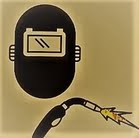Polarity in Welding: Reverse, Straight, and AC
Welding is a critical process in numerous industries, from construction to automotive manufacturing. One of the key factors in achieving a successful weld is understanding the concept of polarity. In welding, polarity refers to the direction of current flow, which can significantly impact the quality and characteristics of the weld. This article will explore the […]
